Events
| Name | organizer | Where |
|---|---|---|
| MBCC “Doing Business with Mongolia seminar and Christmas Receptiom” Dec 10. 2025 London UK | MBCCI | London UK Goodman LLC |
NEWS

The Second National Oncology Center to Be Commissioned in 2030 www.montsame.mn
On January 6, 2025, President of Mongolia Khurelsukh Ukhnaa visited the construction site of the Second National Oncology Center and was introduced to the ongoing work by the Members of the Working Group in charge of supporting its establishment.
The Second National Oncology Center will be located on 12 hectares of land in the Bayangol Am, the 34th khoroo of Songinokhairkhan district of Ulaanbaatar. Around 1,500 doctors to work at the Center will be trained in collaboration with the University of Utah in the United States.
President Khurelsukh noted, “We need to urgently establish a comprehensive and modernized cancer treatment and research facility that meets international standards. With Mongolia's expanding foreign relations, we intend to advance this project through international cooperation and not rely solely on the State Budget. Cancer incidence is increasing each year, and without the timely completion of this facility, the World Health Organization estimates that cancer rates in Mongolia will double by 2040.
The Center, covering 95,000 square meters, will employ about 1,500 doctors and medical staff. Members of the State Great Khural who have studied cancer extensively and deeply understand the adversity of the people are included in the Working Group as they will be a great driving force in this initiative.”
The mortality rate from cancer in Mongolia is 24 percent, which is considerably higher than the global average of 17 percent. Additionally, around 70 percent of cancer patients are diagnosed at later stages of the disease.
The new center will consist of a seven-story building with four blocks. Specifically, Block “A” will house waste management, outpatient services, training, research, and inpatient care. Block “B” will include sterilization, outpatient services, imaging, endoscopy, surgery, laboratory facilities, and office spaces. Block “C” will cover chemotherapy, intensive treatment, emergency services, and inpatient care, while Block “D” will accommodate radiotherapy and anatomical pathology.
The construction of the 600-bed Second National Oncology Center is set to commence next spring and is planned to be fully operational by 2030. The Government of Mongolia is implementing a policy for increasing public participation in early cancer detection, providing localized cancer care for citizens in their respective areas, and reducing cancer-related mortality rates. The Government has also allocated funds in both national and local budgets for the expansion of the National Oncology Center and the provision of medical equipment to regional hospitals.
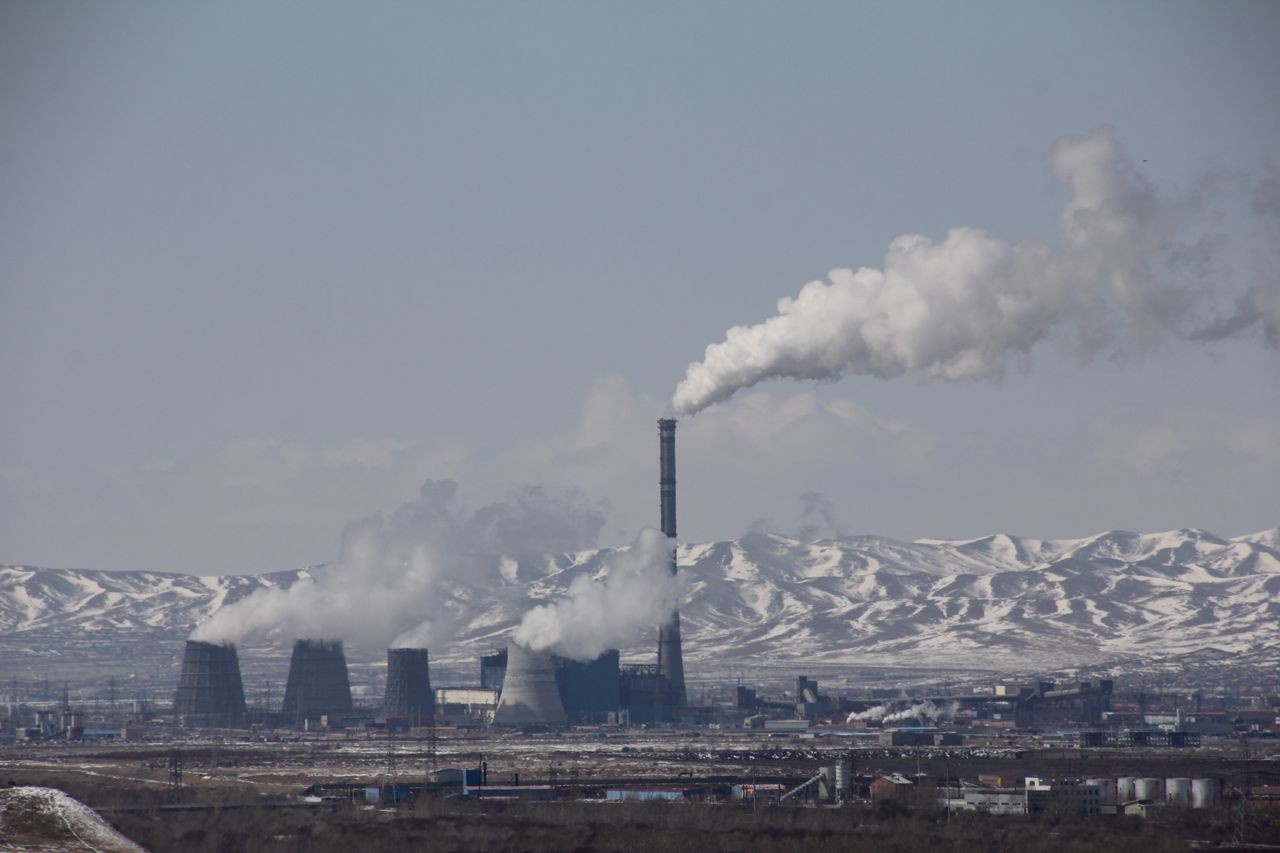
Russia's Inter RAO-Export LLC to Design the Expansion of Thermal Power Plant No. 3 www.montsame.mn
During its plenary session on December 26, 2024, the State Great Khural of Mongolia discussed a draft Law on Ratifying the Agreement between the Governments of Mongolia and the Russian Federation on the Development of Design for the Project to Expand and Modernize the Thermal Power Plant No. 3 of Ulaanbaatar City.
Minister of Energy of Mongolia Choijilsuren Battogtokh noted, "The Thermal Power Plant No. 3, with its 48 MW medium-pressure section, was commissioned between 1968 and 1975, and the 100 MW high-pressure section was put into operation between 1976 and 1981. With the addition of a 50 MW turbine generator in 2014, the installed capacity reached 198 MW for electricity and 585 GCal per hour for heat. It has been in operation for 56 years now. The Plant is located in the most optimal place to support Ulaanbaatar's heat supply network. It provides 32 percent of the heat supply of Ulaanbaatar and 16 percent of the central region's electricity. During the winter, the operation of thermal power plants without proper preparation increases the risk of limiting heat supply to consumers due to technical malfunctions at Thermal Power Plant No. 3. To mitigate this risk, the Plant needs to be expanded and modernized in the near future."
The Government of Mongolia has included in its Action Program a two-phase expansion of the Plant. In the first phase, a new Thermal Power Plant with a capacity of 50 MW of electricity and 100 GCal per hour of heat will be built. The existing 48 MW plant will be decommissioned, and a new thermal power plant with a capacity of 250 MW of electricity and 400 GCal per hour of heat will be constructed in its place. The design work for this will be undertaken during the second phase.
During the official visit of the President of Mongolia to the Russian Federation in 2021, the "Thermal Power Plant No. 3" (TPP No. 3) JSC and "Inter Rao-Export" LLC signed a Memorandum of Understanding on Cooperation, launching the development of a feasibility study for the expansion project. "Inter Rao-Export" LLC financed the feasibility study with its funds and delivered it to TPP No. 3 in September 2022. To determine the total project cost and construction timeline accurately, the Ministry of Energy of Mongolia first developed a draft Agreement between the Governments of Mongolia and the Russian Federation on the Development of Design for the Project to Expand and Modernize the Thermal Power Plant No. 3 of Ulaanbaatar City.
In August 2024, the Government of Mongolia discussed the draft Agreement with the Standing Committees on Security and Foreign Policy, Economics, and Budget of the State Great Khural. Subsequently, based on the minutes of the meeting of the Standing Committee on Security and Foreign Policy and under Directive No. 48 of the Prime Minister of Mongolia, the Minister of Energy was authorized to sign the Agreement with the Russian side. On September 3, 2024, during the official visit of President of the Russian Federation Vladimir Putin to Mongolia, the two sides signed the Agreement, which specifies the scope and general conditions of the engineering surveys and research for the development of the project's design. It also designates "Thermal Power Plant No. 3" JSC as the client and the "Inter Rao-Export" LLC as the contractor.
Based on the presentation by Minister of Energy B. Choijilsuren, and the conclusions of the Standing Committee on Security and Foreign Policy, Members of the State Great Khural asked questions and made remarks. Following this, a vote was held on whether to approve the draft Law on Ratifying the Agreement between the Governments of Mongolia and the Russian Federation on the Development of Design for the Project to Expand and Modernize the Thermal Power Plant No. 3 of Ulaanbaatar City. A majority of the Members voted in favor, and the State Great Khural approved the draft Law.
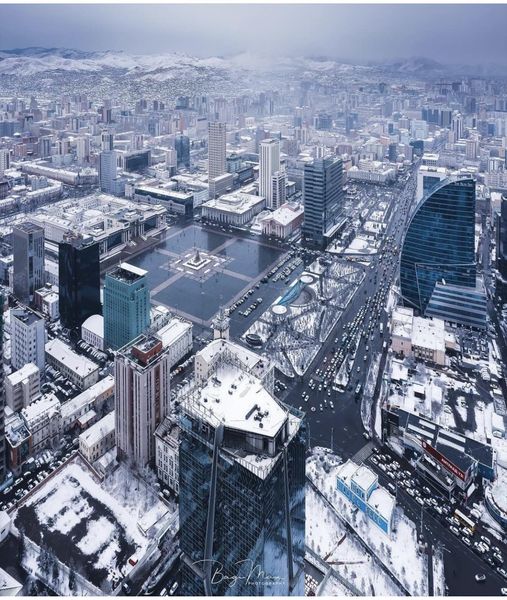
Anti-government rally planned in Ulaanbaatar Jan. 11 www.crisis24.garda.com
Opposition parties led by the Liberte Party plan to protest at Sukhbaatar Square in Ulanbaatar Jan. 11. Organizers are denouncing the ruling coalition over several issues pertaining to economic, environmental, and traffic management policies. Anti-government rallies in recent years have seen high turnouts of several thousand people and sporadic altercations between activists and police. Attendees may hold unannounced marches towards key government buildings in the vicinity, including the Government Palace, as well as residences and offices of the president and prime minister. Additional gatherings, including counter-protests by pro-government groups, may also occur at nearby public squares, parks, and thoroughfares.
Authorities typically heighten security in the capital city ahead of planned demonstrations. Checkpoints at entry points of Ulanbaatar, vehicle and personnel checks, gathering bans, and localized public movement restrictions in key areas are possible. Clashes may occur, especially if protesters attempt to breach security cordons, defy any official bans, or confront rival groups. Violence may also break out if police attempt to carry out mass arrests. Temporary road closures, curtailment of public transport services, and diversions are likely to affect access roads to the main rally site. Increased congestion on roadways and public buses is probable as attendees arrive at and leave the venue. Localized business closures may occur.
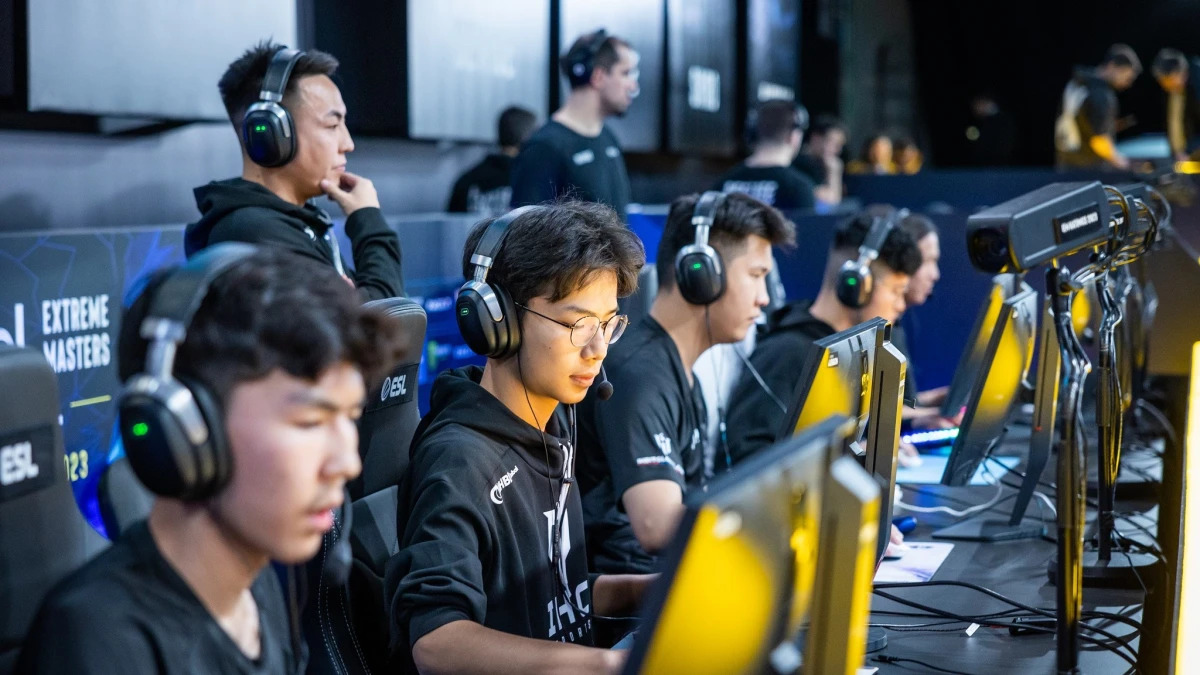
Mongolian Olympic Committee launches eSports www.insidethegames.biz
Esports has rapidly grown in recent years, attracting a global audience of participants and enthusiasts. Recognising its increasing importance, the International Olympic Committee (IOC) has actively integrated esports into the Olympic movement.
In 2023, the IOC hosted the first-ever "Olympic Esports Week" in Singapore and announced the "Esports Olympic Games" set for Saudi Arabia in 2025. In line with these developments, the Mongolian National Olympic Committee (MNOC) has officially launched its "Esports Commission," holding its inaugural meeting following an announcement by MNOC President Battushig Batbold during the Annual Members Meeting on 12 December, 2024.
The commission’s goal is to support Mongolian esports teams and athletes in IOC-recognised events, foster collaboration among member sports federations, and build partnerships with key stakeholders. The commission will be chaired by Batbold, IOC Member and MNOC President, with Mr. Bat-Erdene Gankhuyag as Vice Chair.
Other members include Mrs Buyandelger Peljee, MNOC Executive Board Member and Asian Electronic Sports Federation (AESF) Executive Committee Member; Mr Otgondalai Dorjnyambuu, Rio 2016 bronze medalist and MNOC Executive Board Member; and representatives from Mongolia’s NOC and esports community, including NOC Secretary-General Mr E Badar-Uugan, D Batmunkh, A Undral, Sh Batbayar, and T Khaliunaa.
The MNOC Esports Commission plans to work closely with the IOC Esports Commission, the Olympic Council of Asia (OCA), and the Saudi 2025 Esports Games organising committee to develop strategies and operational roadmaps for advancing esports in Mongolia. Esports gained further recognition when it debuted as a medal event at the 2023 Asian Games in Hangzhou, where Mongolia’s national team earned a silver medal.
Additionally, esports competitions were featured at the East Asian Youth Games 2023 in Ulaanbaatar, showcasing the growing prominence of esports in Mongolia. This new milestone signifies an important step in Mongolia’s esports journey, positioning it for greater international success and recognition.

New requirements set for HASKOM submissions under anti-corruption law www.gogo.mn
In accordance with the Anti-Corruption Law and the Law on the Coordination of Public and Private Interests in Public Service and the Prevention of Conflicts of Interest, all officials subject to the law must submit a new Declaration of Personal Interest and Declaration of Assets and Income (HASKOM) by February 15 each year.
As part of the revisions to the HASKOM form, the Standing Committee on Justice of the parliament approved Resolution No. 05 in 2024, which revised the approval procedures, forms, and lists. The guidelines for completing the declaration were further clarified by Order No. A/96 issued by the Head of the Anti-Corruption Department in 2024, with the updated procedures taking effect on January 1.
The Anti-Corruption Agency opened the online submission system for applicants to re-submit their 2024 HASKOM starting January 2. The submission process is now active nationwide via the agency's online platform at https://meduuleg.iaac.mn/.
In addition to reporting dual employment, as well as any equipment and virtual assets owned by both themselves and their family members, the new regulations also require officials to report their and their family members' income after taxes and contributions have been deducted.
Applicants must log in to the online system of the Independent Agency Against Corruption, re-submit their 2024 HASKOM, verify the information by February 15 and submit the confirmation sheet to the appropriate authorized official for registration and storage of their application.

Why Mongolia should be your next wellness escape www.nationalgeographic.com
I scramble up the rocks as my guide, Nergui, silently beckons me forward. He’s motioning to something on a granite outcrop ahead. I squint and adjust my binoculars until it comes into view — a young cinereous vulture, with beady black eyes and a curved beak, is peeking over its nest. Overhead, a larger bird circles; below us, the vast, boulder-strewn moonscape stretches as far as the eye can see.
Mongolia’s Gobi Desert is a remote and seemingly inhospitable place. The vast sense of space and emptiness is all-encompassing, but, as Nergui is showing me, Ikh Nart Nature Reserve on the desert’s north edge is very much alive. Summer rainfall has stirred the landscape; bright green alliums carpet the ground and temporary ponds provide water for migratory birds and wildlife. We sit in silence, scanning the horizon for some of the desert’s native animals, such as ibex, big-horned argali sheep and gazelles. I’m pleased to learn that the wolves won’t be back until winter.
Six times the size of Britain but home to fewer than 3.5 million people, Mongolia is the least densely populated country in the world. Sandwiched between Russia and China, it’s an otherworldly mosaic of steppes, arid desert, valleys and forested mountains, where people have lived a largely nomadic, pastoral lifestyle for centuries. Perhaps it’s not the first place one might think of for a yoga sojourn — but that’s why I’m here, on a 10-day retreat with Reclaim Yourself, which combines authentic adventures with a twice-daily practice. Off-grid with a group of just 20 people, I’ll be learning about local life with various hosts and herders, and staying in two traditional ger (nomadic Mongolian yurt) camps, both dismantled each season to leave no trace.
Our journey begins in Ulaanbaatar, Mongolia’s sprawling capital. As we drive from the airport, the vast, open landscapes gradually give way to a cityscape dominated by Soviet-style tower blocks and congested roads. Mongolia, under Communist rule for 70 years until 1990, still bears the imprint of that era in its stark architecture. Today, over a third of the population resides here and, with urban migration on the rise, the infrastructure is straining to keep up.
As I walk along the streets, I soon find myself warming to its softer edges; children cycle through fountains on Sukhbaatar square, teenagers skateboard in the park, groups of friends fill karaoke bars and diners tuck into meaty Korean barbecue. Shopping malls have whole floors dedicated to cashmere, the National Museum sweeps visitors from Neolithic times to the 21st century, and the Choijin Lama Temple Museum, in the centre of town, is one of the few monasteries saved from destruction during the Stalinist era.
Built by the Soviets in 1949, Ulaanbaatar train station is the largest in the country. It’s a square hulk of a building, with a plain facade and columned entrance; inside, chandeliers dangle in the waiting room and loud announcements boom over the speaker. We’re here to catch the Trans-Mongolian Express, which runs all the way to Beijing, on a seven-hour journey into the desert. When the train trundles onto the platform, an instructor in a neat uniform ushers us to our compartments, and it’s not long before we embark into the flat, emerald openness of the steppe.
I gaze out of the window as the hours slip by, the vast horizon broken only by the occasional white ger campsite. Free-roaming camels, along with herds of horses and sheep, dot the landscape, and a fiery sunset streaks the sky pink and orange. Near midnight, we step off into what feels like the middle of nowhere. Heavy rain has opened gulleys in the desert floor and our transfer by an old Russian bus becomes an adventure as we twist and turn across an unmarked landscape, trying to access our camp. Finally, we arrive under a black velvet sky, the stars hanging so low I feel I could reach up and pluck one. The silence is like nothing I’ve experienced before.
Into the wild
The following day, we wake to a cloudless blue morning and are introduced to our guide, Nergui, who manages the camp for Nomadic Journeys, a company that focuses on low-impact tourism and supporting conservation initiatives on the ground. He’s spent the last 16 summers out here in the Gobi Desert with his family, and his wife, Ouynzul, is head chef.
The camp is an idyllic arc of a dozen white ger, a central one used as our yoga shala (space), with classes, led by London-based Zephyr Wildman, bookending our days. We slow down, breathe and move through asana postures, with lessons fused with Buddhist teachings on being in the moment and the art of letting go. The movement and meditation complement the vast stillness of the landscape, and the lack of news and noise soon begins to seep into my body and soul.
This area, I discover, has long been a centre of Buddhism. Humans have been living here in the desert for thousands of years. On our daily guided walks with Nergui, the landscape reveals its secrets in stages. We pass ancient burial mounds and find a Bronze Age arrow tip and fragments of pottery hidden among bleached animal bones littering the ground.
One evening, as the clouds glow rose-gold, Nergui takes us to see petroglyphs on a rock close to the camp. A man with a spear, a camel and an ibex are all clearly visible. “It’s this rich history which fascinates me,” says Nergui. “Millions of years ago, this whole area was under the sea, yet traces of life from every era remain. Archaeologists uncover new discoveries every year.”
“About 30% of Mongolia’s population still live a nomadic lifestyle and, in this reserve, around 10 families continue to roam, moving with their animals throughout the year,” he continues. “It’s common to see camel herders passing by our camp, although there are fewer these days. Many people have moved to town or gone to work in the mines.”
The following evening, we delve deeper into the desert, passing surreal rock formations and gargantuan sand dunes before arriving at Elstei, a sacred Buddhist site. The name translates to ‘with sand’ due to the ribbons weaving between its towering rocks and it’s thought that monks once came here to meditate. The well-loved Buddhist mantra Om Mani Padme Hum, meaning ‘The jewel is in the lotus’, is etched into the wall. At my feet, a lizard skits across the ground, a fox disappears into a cave and a kestrel hangs in the air. Though no one lives here now, the desert feels more alive than ever.
The rocks form a natural amphitheatre, where we feast outdoors on homemade curry before climbing the higher peaks to take in sweeping sunset views. Gathering in a circle, we join in meditation to honour the elements, and later, sat around a fire under a star-studded sky, our hosts sing traditional Mongolian ballads celebrating family bonds and the power of Mother Nature. Flames leap and voices soar, guttural notes I don’t understand but that still seem to penetrate my soul.
To the river
Our next stop is a full day’s drive north, on the banks of the River Tuul in the Khan Khentii Strictly Protected Area. En route, it feels like the saturation has been turned up to full as we’re enveloped by the vivid blue and green-gold landscape. Though the scenery shifts, the vastness and absence of people remain constant. In some areas, it resembles a Mad Max film set, with mines and cement plants dotting the horizon, giving the landscape a dystopian feel.
Some 30 miles east of Ulaanbaatar on the riverbank, our journey is broken up with a pit stop at Tsonjin Boldog — a towering 40-metre stainless steel statue of the legendary warrior Genghis Khan on horseback. The world’s tallest equestrian statue, the site was unveiled in 2008 to mark the 800th anniversary of the founding of the Mongol Empire, which once spanned over nine million square miles. Today, visitors can climb up through the horse’s chest and neck to the head for far-reaching views of the surrounding countryside.
It’s not long before we’re back in our jeeps, off-roading across the plains and rolling hills. The swollen River Tuul has burst its banks, so we traverse flooded tracks into wildflower-covered valleys, speckled with flocks of sheep and goats. Our camp, Nomadic Journeys’ Jalman Meadows Wilderness, is an idyllic spot with gers set in pretty meadows with the River Tuul gushing by. A yak and cart transfer our luggage to our new homes.
It’s raining outside, but inside the ger a central log burner keeps us warm. These round white structures, insulated with felt, are integral to Mongolian life, packed up and transported on the backs of camels as nomads move from place to place. Inside it’s a riot of colours; wooden spokes and beds are intricately painted, with every design carrying a different meaning.
Each morning, we rise early to blankets of mist swirling magically in the valley, while days unfurl at an easy pace, punctuated by yoga, massage (a therapist travels with us offering treatments) and delicious meals. Chef Richie is from the UK but works with the Mongolian team to conjure up vegetarian feasts — unusual amid the meat-heavy local diet. Down by the river, we heat up in a sauna tent and before plunging into icy water, watched nonchalently by grazing yaks. The camp also offers kayaking and rafting, but the river is too full and fast during our stay, so we stick to the land. With 360-degree views from camp, we watch the weather roll in: walls of rain and lightning followed by sparkling sun and rainbows.
I quickly learn that the Khan Khentii Strictly Protected Area is a haven for hiking. There are no marked trails in this vast wilderness, but, with a guide, we walk through the lush, flower-filled grasslands and up into the woods. This transition zone from steppe to boreal forest is home to plentiful wildlife, from wolves to bears, and the air is fresh and sweet. The most important activity of all, however, is horse-riding.
“Of the five livestock animals native to Mongolia — camel, sheep, goats, cows and horse — the horse is king,” says Jagaa, a local herder, who’s taking us trekking. Dressed in a pale, traditional deel and long boots, he’s rounded up some of his semi-wild herd and we set off across the wildflower-speckled meadows. It’s an idyllic way to explore and all but complete novices can be catered for. Jagaa’s six-year-old son Jackar accompanies us, his little legs high on the saddle, but he rides with mastery, putting my posture to shame.
Horse-racing is also highly revered here; it’s one of the three ‘masculine sports’, alongside wrestling and archery, which feature in July’s Naadam festival, a focal point in the Mongolian calendar. While the biggest celebrations take place in Ulaanbaatar’s National Sports Stadium, festivities are held in villages across the country. Jagaa is happy that his horses, ridden by his brother, won several prizes in the local tournament this year.
I learn that Jagaa grew up on this land, as did his ancestors, moving camp several times a year with their animals. He sells meat and dairy products. Mare’s milk becomes kumis (traditional fermented alcohol), the sheep provide wool, and the goats cashmere. Nomadic life, he tells me, is getting harder. Climate change is affecting the grassland and severe winters, known as dzud (winter disasters) are becoming more frequent, killing many animals. There’s pressure, too, to become settled farmers and raise larger numbers of livestock. “It’s not an easy life and I’m not sure how it will continue,” he explains. “But living in a nomadic way in nature is a blessing.”
One evening, we’re invited to Jagaa’s family home located close to our camp. His 13-year-old daughter Maral welcomes us into the ger with salty, milky tea and hard cheese — more is hanging up to dry, pegged out on a washing line inside. Today’s nomads have TVs and mobile phones, and Maral is dressed in a yellow TikTok T-shirt. It feels like the collision of two worlds, where the past lives alongside the present. In the winter, she, like her siblings, stays in dorms at school in the local village, but, for the summer, she’s back to help.
They teach me that shamanism has long been Mongolia’s dominant religion and today Buddhism mixes easily with a type of nature worship. “We believe that everything has a spirit — there needs to be balance for nature to be happy,” explains Jagaa. “I’m worried about how the spirits of the land will cope with the changes.”
That evening, in my yoga session, I find myself contemplating what a privilege it is to be in such a wild place; to be welcomed by these gentle people and to witness this precious, pastoral lifestyle. As the wind plays havoc with the ger door and a cricket joins in as we chant, I realise how easy it is to forget the rest of the world here, to sink into the simple rhythms of nature, away from screens. I’m certainly in no hurry to return home.
ByJane Dunford
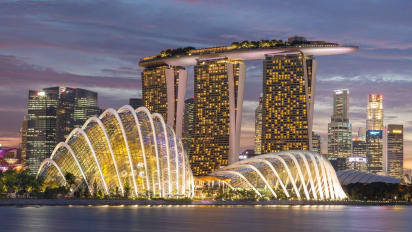
Singapore Publishes MLI Modifications to Tax Treaty With Mongolia www.taxnotes.com
The Singapore government on December 30, 2024, published guidance specifying the modifications made by the OECD base erosion and profit-shifting multilateral instrument to the 2002 Mongolia-Singapore income tax treaty.
Singapore signed the MLI on June 7, 2017, when it was opened for signature, while Mongolia signed the MLI on October 6, 2022. Singapore deposited its ratification instrument for the MLI on December 21, 2018, while Mongolia deposited its on September 30, 2024.
The MLI entered into force April 1, 2019, for Singapore and January 1, 2025, for Mongolia. The guidance specifies that the preamble is replaced and an article on the prevention of treaty abuse is added.
The guidance states that the MLI has effect regarding the Mongolia-Singapore tax treaty, in Singapore, as follows:
for taxes withheld at source, on amounts paid, deemed paid, or liable to be paid (whichever is the earliest) on or after January 1, 2025; and
for taxes other than those withheld at source, when the income is derived or received in a basis period beginning on or after July 1, 2025.
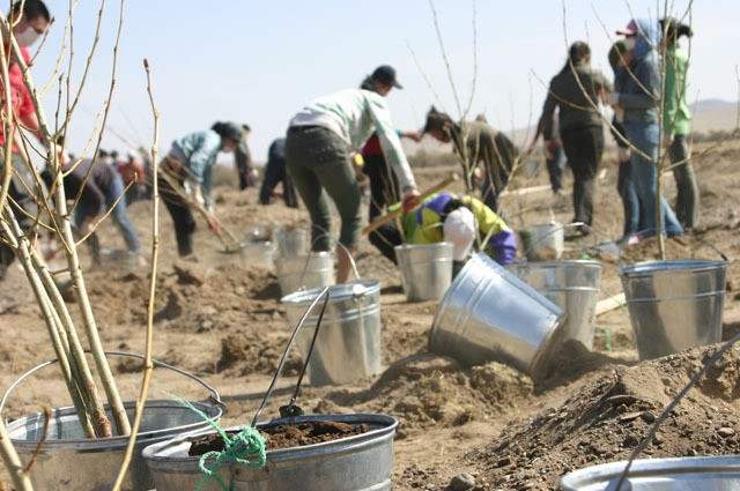
Banking sector involved in supporting the “Billion Tree” national movement www.mongolianbusinessdatabase.com
Banks and financial institutions are collaborating closely with the national “Billion Trees” movement in Mongolia. In March 2022, the “Billion Tree Fund” (BTF), the climate and forest fund, was established under the policy support from the Central Bank of Mongolia to fulfill the private sector commitments to the Billion Tree National Movement launched by the President of Mongolia at the United Nations Assembly in 2021.
The fund aims to enhance private sector engagement in environmental conservation and climate change mitigation by planting the right tree in the right locations and create a sustainable funding mechanism for the forestry sector, emphasizing community involvement and long-term ecological benefits.
The Billion Tree Fund is nearing its two-and-a-half-year milestone since inception, aligning with global standards prioritizing governance, transparency, and autonomy. The fund operates through a series of strategic key initiatives aimed at addressing key environmental protection, sustainable land use, and community well-bring, creating a lasting impact on both the local and global scale. The main activities:
1. State -owned kindergartens and hospitals, and nursing homes with green spaces: These green areas are integral to the development of urban city landscapes, as they not only help mitigate greenhouse gas emissions but also provide opportunities to promote environment friendly behaviors and healthy, nature-connected lifestyle among communities.
2. Public engagement-based afforestation and reforestation: The fund is dedicated to engaging the public in large -scale afforestation and reforestation projects in critical areas, including boreal forests and saxaul lands. These efforts are essential for restoring vital ecosystem, combating climate change, and improving biodiversity regions where reforestation is needed most.
3. Capacity building and awareness -raising in the forest sector: Recognizing the need for sustainable forest management, the fund focuses on enhancing professional competence and raising awareness within the forestry sector. This sector, often neglected, requires careful attention to improve skills, knowledge, and attitudes for the long-term sustainability of forest resources and the development of effective management practices. activities in the forest sector which was neglected, and professional competence and attitude are critical aspects that must be carefully addressed for the long-term sustainable management forest.
Implementing through these activities, the fund remains committed to continuously encouraging and integrating innovative technologies and creative methods into its ongoing projects. Through this forward--thinking approach, the fund aims to enhance its impact, foster long -term sustainability, and promote a more resilient, eco-conscious future. To achieve this, additional investment is needed long-term sustainable forest management and enhancement of the new technology and enhance capacity building for human resources in the forestry sector.
Since its establishment, the fund has planted 3 million trees across 1,435 hectares in Mongolia, covering both boreal and sexual landscapes through 81 projects, selected according to international funding standard and principles, over two years. All these projects were chosen by an independent technical committee, which includes experts from 24 sectors, including environment, forestry and finance.
Look ahead to 2025, the Billion Tree Fund is set to announce new project selections and continue its ongoing projects evaluation process in accordance with established regulations.
Join us in our mission to plant trees and contribute to a sustainable green environment.
We welcome collaboration with any entity that shares our vision for a greener future.
...
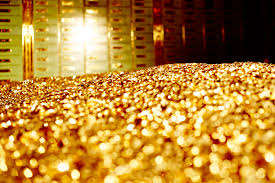
Mongolia's forex reserves reach record high in 2024 www.xinhuanet.com
Mongolia's foreign exchange reserves hit a record high of 5.5 billion U.S. dollars by the end of 2024, according to official data released by the country's central bank on Friday.
The figure represents an 11.81 percent increase compared to the previous year, the Bank of Mongolia said.
Mongolia's forex reserves had significantly dwindled to 2.6 billion dollars in August 2022, the lowest level since 2017, due to a deepening current account deficit driven by challenging internal and external economic conditions.
In March 2024, the reserves surpassed the 5-billion-dollar mark for the first time in the country's history, marking a turning point in Mongolia's financial recovery, the central bank noted.
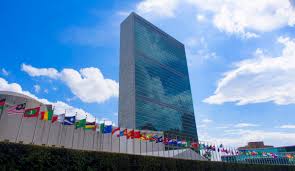
Secretary-General Appoints Jaap van Hierden of Netherlands United Nations Resident Coordinator in Mongolia www.press.un.org
United Nations Secretary-General António Guterres has appointed Jaap van Hierden of the Netherlands as the United Nations Resident Coordinator in Mongolia, with the host Government’s approval, on 1 January.
Mr. van Hierden has more than 30 years of experience in development, humanitarian action and peacebuilding, including establishing, managing and leading offices and projects and strategic, policy, operational, managerial, and coordination roles and responsibilities.
Most recently he served as the first UN Resident Coordinator of the new UN Multi-Country Office in Micronesia hosted by Pohnpei/Federated States of Micronesia supporting Palau, the Federated States of Micronesia, the Marshall Islands, Nauru and Kiribati. In this capacity, he led the UN country team to ensure their support to achieve national development goals. From 2018 to 2021, he worked with Cordaid in Afghanistan. He worked with the United Nations Office for Project Services (UNOPS) in the Philippines and Cambodia from 2013 to 2016 and for UNOPS in various roles in Copenhagen, New York, Kuala Lumpur and Bangkok from 1995 to 2013. He worked for the United Nations Development Programme (UNDP) in Bangkok in 1994, and from 1991 to 1993 he served in Sierra Leone with the United Nations Capital Development Fund.
Mr. van Hierden holds a master’s degree in agricultural economics from Wageningen University in the Netherlands. He is married, with three adult children and one teenager.
- «
- 1
- 2
- 3
- 4
- 5
- 6
- 7
- 8
- 9
- 10
- 11
- 12
- 13
- 14
- 15
- 16
- 17
- 18
- 19
- 20
- 21
- 22
- 23
- 24
- 25
- 26
- 27
- 28
- 29
- 30
- 31
- 32
- 33
- 34
- 35
- 36
- 37
- 38
- 39
- 40
- 41
- 42
- 43
- 44
- 45
- 46
- 47
- 48
- 49
- 50
- 51
- 52
- 53
- 54
- 55
- 56
- 57
- 58
- 59
- 60
- 61
- 62
- 63
- 64
- 65
- 66
- 67
- 68
- 69
- 70
- 71
- 72
- 73
- 74
- 75
- 76
- 77
- 78
- 79
- 80
- 81
- 82
- 83
- 84
- 85
- 86
- 87
- 88
- 89
- 90
- 91
- 92
- 93
- 94
- 95
- 96
- 97
- 98
- 99
- 100
- 101
- 102
- 103
- 104
- 105
- 106
- 107
- 108
- 109
- 110
- 111
- 112
- 113
- 114
- 115
- 116
- 117
- 118
- 119
- 120
- 121
- 122
- 123
- 124
- 125
- 126
- 127
- 128
- 129
- 130
- 131
- 132
- 133
- 134
- 135
- 136
- 137
- 138
- 139
- 140
- 141
- 142
- 143
- 144
- 145
- 146
- 147
- 148
- 149
- 150
- 151
- 152
- 153
- 154
- 155
- 156
- 157
- 158
- 159
- 160
- 161
- 162
- 163
- 164
- 165
- 166
- 167
- 168
- 169
- 170
- 171
- 172
- 173
- 174
- 175
- 176
- 177
- 178
- 179
- 180
- 181
- 182
- 183
- 184
- 185
- 186
- 187
- 188
- 189
- 190
- 191
- 192
- 193
- 194
- 195
- 196
- 197
- 198
- 199
- 200
- 201
- 202
- 203
- 204
- 205
- 206
- 207
- 208
- 209
- 210
- 211
- 212
- 213
- 214
- 215
- 216
- 217
- 218
- 219
- 220
- 221
- 222
- 223
- 224
- 225
- 226
- 227
- 228
- 229
- 230
- 231
- 232
- 233
- 234
- 235
- 236
- 237
- 238
- 239
- 240
- 241
- 242
- 243
- 244
- 245
- 246
- 247
- 248
- 249
- 250
- 251
- 252
- 253
- 254
- 255
- 256
- 257
- 258
- 259
- 260
- 261
- 262
- 263
- 264
- 265
- 266
- 267
- 268
- 269
- 270
- 271
- 272
- 273
- 274
- 275
- 276
- 277
- 278
- 279
- 280
- 281
- 282
- 283
- 284
- 285
- 286
- 287
- 288
- 289
- 290
- 291
- 292
- 293
- 294
- 295
- 296
- 297
- 298
- 299
- 300
- 301
- 302
- 303
- 304
- 305
- 306
- 307
- 308
- 309
- 310
- 311
- 312
- 313
- 314
- 315
- 316
- 317
- 318
- 319
- 320
- 321
- 322
- 323
- 324
- 325
- 326
- 327
- 328
- 329
- 330
- 331
- 332
- 333
- 334
- 335
- 336
- 337
- 338
- 339
- 340
- 341
- 342
- 343
- 344
- 345
- 346
- 347
- 348
- 349
- 350
- 351
- 352
- 353
- 354
- 355
- 356
- 357
- 358
- 359
- 360
- 361
- 362
- 363
- 364
- 365
- 366
- 367
- 368
- 369
- 370
- 371
- 372
- 373
- 374
- 375
- 376
- 377
- 378
- 379
- 380
- 381
- 382
- 383
- 384
- 385
- 386
- 387
- 388
- 389
- 390
- 391
- 392
- 393
- 394
- 395
- 396
- 397
- 398
- 399
- 400
- 401
- 402
- 403
- 404
- 405
- 406
- 407
- 408
- 409
- 410
- 411
- 412
- 413
- 414
- 415
- 416
- 417
- 418
- 419
- 420
- 421
- 422
- 423
- 424
- 425
- 426
- 427
- 428
- 429
- 430
- 431
- 432
- 433
- 434
- 435
- 436
- 437
- 438
- 439
- 440
- 441
- 442
- 443
- 444
- 445
- 446
- 447
- 448
- 449
- 450
- 451
- 452
- 453
- 454
- 455
- 456
- 457
- 458
- 459
- 460
- 461
- 462
- 463
- 464
- 465
- 466
- 467
- 468
- 469
- 470
- 471
- 472
- 473
- 474
- 475
- 476
- 477
- 478
- 479
- 480
- 481
- 482
- 483
- 484
- 485
- 486
- 487
- 488
- 489
- 490
- 491
- 492
- 493
- 494
- 495
- 496
- 497
- 498
- 499
- 500
- 501
- 502
- 503
- 504
- 505
- 506
- 507
- 508
- 509
- 510
- 511
- 512
- 513
- 514
- 515
- 516
- 517
- 518
- 519
- 520
- 521
- 522
- 523
- 524
- 525
- 526
- 527
- 528
- 529
- 530
- 531
- 532
- 533
- 534
- 535
- 536
- 537
- 538
- 539
- 540
- 541
- 542
- 543
- 544
- 545
- 546
- 547
- 548
- 549
- 550
- 551
- 552
- 553
- 554
- 555
- 556
- 557
- 558
- 559
- 560
- 561
- 562
- 563
- 564
- 565
- 566
- 567
- 568
- 569
- 570
- 571
- 572
- 573
- 574
- 575
- 576
- 577
- 578
- 579
- 580
- 581
- 582
- 583
- 584
- 585
- 586
- 587
- 588
- 589
- 590
- 591
- 592
- 593
- 594
- 595
- 596
- 597
- 598
- 599
- 600
- 601
- 602
- 603
- 604
- 605
- 606
- 607
- 608
- 609
- 610
- 611
- 612
- 613
- 614
- 615
- 616
- 617
- 618
- 619
- 620
- 621
- 622
- 623
- 624
- 625
- 626
- 627
- 628
- 629
- 630
- 631
- 632
- 633
- 634
- 635
- 636
- 637
- 638
- 639
- 640
- 641
- 642
- 643
- 644
- 645
- 646
- 647
- 648
- 649
- 650
- 651
- 652
- 653
- 654
- 655
- 656
- 657
- 658
- 659
- 660
- 661
- 662
- 663
- 664
- 665
- 666
- 667
- 668
- 669
- 670
- 671
- 672
- 673
- 674
- 675
- 676
- 677
- 678
- 679
- 680
- 681
- 682
- 683
- 684
- 685
- 686
- 687
- 688
- 689
- 690
- 691
- 692
- 693
- 694
- 695
- 696
- 697
- 698
- 699
- 700
- 701
- 702
- 703
- 704
- 705
- 706
- 707
- 708
- 709
- 710
- 711
- 712
- 713
- 714
- 715
- 716
- 717
- 718
- 719
- 720
- 721
- 722
- 723
- 724
- 725
- 726
- 727
- 728
- 729
- 730
- 731
- 732
- 733
- 734
- 735
- 736
- 737
- 738
- 739
- 740
- 741
- 742
- 743
- 744
- 745
- 746
- 747
- 748
- 749
- 750
- 751
- 752
- 753
- 754
- 755
- 756
- 757
- 758
- 759
- 760
- 761
- 762
- 763
- 764
- 765
- 766
- 767
- 768
- 769
- 770
- 771
- 772
- 773
- 774
- 775
- 776
- 777
- 778
- 779
- 780
- 781
- 782
- 783
- 784
- 785
- 786
- 787
- 788
- 789
- 790
- 791
- 792
- 793
- 794
- 795
- 796
- 797
- 798
- 799
- 800
- 801
- 802
- 803
- 804
- 805
- 806
- 807
- 808
- 809
- 810
- 811
- 812
- 813
- 814
- 815
- 816
- 817
- 818
- 819
- 820
- 821
- 822
- 823
- 824
- 825
- 826
- 827
- 828
- 829
- 830
- 831
- 832
- 833
- 834
- 835
- 836
- 837
- 838
- 839
- 840
- 841
- 842
- 843
- 844
- 845
- 846
- 847
- 848
- 849
- 850
- 851
- 852
- 853
- 854
- 855
- 856
- 857
- 858
- 859
- 860
- 861
- 862
- 863
- 864
- 865
- 866
- 867
- 868
- 869
- 870
- 871
- 872
- 873
- 874
- 875
- 876
- 877
- 878
- 879
- 880
- 881
- 882
- 883
- 884
- 885
- 886
- 887
- 888
- 889
- 890
- 891
- 892
- 893
- 894
- 895
- 896
- 897
- 898
- 899
- 900
- 901
- 902
- 903
- 904
- 905
- 906
- 907
- 908
- 909
- 910
- 911
- 912
- 913
- 914
- 915
- 916
- 917
- 918
- 919
- 920
- 921
- 922
- 923
- 924
- 925
- 926
- 927
- 928
- 929
- 930
- 931
- 932
- 933
- 934
- 935
- 936
- 937
- 938
- 939
- 940
- 941
- 942
- 943
- 944
- 945
- 946
- 947
- 948
- 949
- 950
- 951
- 952
- 953
- 954
- 955
- 956
- 957
- 958
- 959
- 960
- 961
- 962
- 963
- 964
- 965
- 966
- 967
- 968
- 969
- 970
- 971
- 972
- 973
- 974
- 975
- 976
- 977
- 978
- 979
- 980
- 981
- 982
- 983
- 984
- 985
- 986
- 987
- 988
- 989
- 990
- 991
- 992
- 993
- 994
- 995
- 996
- 997
- 998
- 999
- 1000
- 1001
- 1002
- 1003
- 1004
- 1005
- 1006
- 1007
- 1008
- 1009
- 1010
- 1011
- 1012
- 1013
- 1014
- 1015
- 1016
- 1017
- 1018
- 1019
- 1020
- 1021
- 1022
- 1023
- 1024
- 1025
- 1026
- 1027
- 1028
- 1029
- 1030
- 1031
- 1032
- 1033
- 1034
- 1035
- 1036
- 1037
- 1038
- 1039
- 1040
- 1041
- 1042
- 1043
- 1044
- 1045
- 1046
- 1047
- 1048
- 1049
- 1050
- 1051
- 1052
- 1053
- 1054
- 1055
- 1056
- 1057
- 1058
- 1059
- 1060
- 1061
- 1062
- 1063
- 1064
- 1065
- 1066
- 1067
- 1068
- 1069
- 1070
- 1071
- 1072
- 1073
- 1074
- 1075
- 1076
- 1077
- 1078
- 1079
- 1080
- 1081
- 1082
- 1083
- 1084
- 1085
- 1086
- 1087
- 1088
- 1089
- 1090
- 1091
- 1092
- 1093
- 1094
- 1095
- 1096
- 1097
- 1098
- 1099
- 1100
- 1101
- 1102
- 1103
- 1104
- 1105
- 1106
- 1107
- 1108
- 1109
- 1110
- 1111
- 1112
- 1113
- 1114
- 1115
- 1116
- 1117
- 1118
- 1119
- 1120
- 1121
- 1122
- 1123
- 1124
- 1125
- 1126
- 1127
- 1128
- 1129
- 1130
- 1131
- 1132
- 1133
- 1134
- 1135
- 1136
- 1137
- 1138
- 1139
- 1140
- 1141
- 1142
- 1143
- 1144
- 1145
- 1146
- 1147
- 1148
- 1149
- 1150
- 1151
- 1152
- 1153
- 1154
- 1155
- 1156
- 1157
- 1158
- 1159
- 1160
- 1161
- 1162
- 1163
- 1164
- 1165
- 1166
- 1167
- 1168
- 1169
- 1170
- 1171
- 1172
- 1173
- 1174
- 1175
- 1176
- 1177
- 1178
- 1179
- 1180
- 1181
- 1182
- 1183
- 1184
- 1185
- 1186
- 1187
- 1188
- 1189
- 1190
- 1191
- 1192
- 1193
- 1194
- 1195
- 1196
- 1197
- 1198
- 1199
- 1200
- 1201
- 1202
- 1203
- 1204
- 1205
- 1206
- 1207
- 1208
- 1209
- 1210
- 1211
- 1212
- 1213
- 1214
- 1215
- 1216
- 1217
- 1218
- 1219
- 1220
- 1221
- 1222
- 1223
- 1224
- 1225
- 1226
- 1227
- 1228
- 1229
- 1230
- 1231
- 1232
- 1233
- 1234
- 1235
- 1236
- 1237
- 1238
- 1239
- 1240
- 1241
- 1242
- 1243
- 1244
- 1245
- 1246
- 1247
- 1248
- 1249
- 1250
- 1251
- 1252
- 1253
- 1254
- 1255
- 1256
- 1257
- 1258
- 1259
- 1260
- 1261
- 1262
- 1263
- 1264
- 1265
- 1266
- 1267
- 1268
- 1269
- 1270
- 1271
- 1272
- 1273
- 1274
- 1275
- 1276
- 1277
- 1278
- 1279
- 1280
- 1281
- 1282
- 1283
- 1284
- 1285
- 1286
- 1287
- 1288
- 1289
- 1290
- 1291
- 1292
- 1293
- 1294
- 1295
- 1296
- 1297
- 1298
- 1299
- 1300
- 1301
- 1302
- 1303
- 1304
- 1305
- 1306
- 1307
- 1308
- 1309
- 1310
- 1311
- 1312
- 1313
- 1314
- 1315
- 1316
- 1317
- 1318
- 1319
- 1320
- 1321
- 1322
- 1323
- 1324
- 1325
- 1326
- 1327
- 1328
- 1329
- 1330
- 1331
- 1332
- 1333
- 1334
- 1335
- 1336
- 1337
- 1338
- 1339
- 1340
- 1341
- 1342
- 1343
- 1344
- 1345
- 1346
- 1347
- 1348
- 1349
- 1350
- 1351
- 1352
- 1353
- 1354
- 1355
- 1356
- 1357
- 1358
- 1359
- 1360
- 1361
- 1362
- 1363
- 1364
- 1365
- 1366
- 1367
- 1368
- 1369
- 1370
- 1371
- 1372
- 1373
- 1374
- 1375
- 1376
- 1377
- 1378
- 1379
- 1380
- 1381
- 1382
- 1383
- 1384
- 1385
- 1386
- 1387
- 1388
- 1389
- 1390
- 1391
- 1392
- 1393
- 1394
- 1395
- 1396
- 1397
- 1398
- 1399
- 1400
- 1401
- 1402
- 1403
- 1404
- 1405
- 1406
- 1407
- 1408
- 1409
- 1410
- 1411
- 1412
- 1413
- 1414
- 1415
- 1416
- 1417
- 1418
- 1419
- 1420
- 1421
- 1422
- 1423
- 1424
- 1425
- 1426
- 1427
- 1428
- 1429
- 1430
- 1431
- 1432
- 1433
- 1434
- 1435
- 1436
- 1437
- 1438
- 1439
- 1440
- 1441
- 1442
- 1443
- 1444
- 1445
- 1446
- 1447
- 1448
- 1449
- 1450
- 1451
- 1452
- 1453
- 1454
- 1455
- 1456
- 1457
- 1458
- 1459
- 1460
- 1461
- 1462
- 1463
- 1464
- 1465
- 1466
- 1467
- 1468
- 1469
- 1470
- 1471
- 1472
- 1473
- 1474
- 1475
- 1476
- 1477
- 1478
- 1479
- 1480
- 1481
- 1482
- 1483
- 1484
- 1485
- 1486
- 1487
- 1488
- 1489
- 1490
- 1491
- 1492
- 1493
- 1494
- 1495
- 1496
- 1497
- 1498
- 1499
- 1500
- 1501
- 1502
- 1503
- 1504
- 1505
- 1506
- 1507
- 1508
- 1509
- 1510
- 1511
- 1512
- 1513
- 1514
- 1515
- 1516
- 1517
- 1518
- 1519
- 1520
- 1521
- 1522
- 1523
- 1524
- 1525
- 1526
- 1527
- 1528
- 1529
- 1530
- 1531
- 1532
- 1533
- 1534
- 1535
- 1536
- 1537
- 1538
- 1539
- 1540
- 1541
- 1542
- 1543
- 1544
- 1545
- 1546
- 1547
- 1548
- 1549
- 1550
- 1551
- 1552
- 1553
- 1554
- 1555
- 1556
- 1557
- 1558
- 1559
- 1560
- 1561
- 1562
- 1563
- 1564
- 1565
- 1566
- 1567
- 1568
- 1569
- 1570
- 1571
- 1572
- 1573
- 1574
- 1575
- 1576
- 1577
- 1578
- 1579
- 1580
- 1581
- 1582
- 1583
- 1584
- 1585
- 1586
- 1587
- 1588
- 1589
- 1590
- 1591
- 1592
- 1593
- 1594
- 1595
- 1596
- 1597
- 1598
- 1599
- 1600
- 1601
- 1602
- 1603
- 1604
- 1605
- 1606
- 1607
- 1608
- 1609
- 1610
- 1611
- 1612
- 1613
- 1614
- 1615
- 1616
- 1617
- 1618
- 1619
- 1620
- 1621
- 1622
- 1623
- 1624
- 1625
- 1626
- 1627
- 1628
- 1629
- 1630
- 1631
- 1632
- 1633
- 1634
- 1635
- 1636
- 1637
- 1638
- 1639
- 1640
- 1641
- 1642
- 1643
- 1644
- 1645
- 1646
- 1647
- 1648
- 1649
- 1650
- 1651
- 1652
- 1653
- 1654
- 1655
- 1656
- 1657
- 1658
- 1659
- 1660
- 1661
- 1662
- 1663
- 1664
- 1665
- 1666
- 1667
- 1668
- 1669
- 1670
- 1671
- 1672
- 1673
- 1674
- 1675
- 1676
- 1677
- 1678
- 1679
- 1680
- 1681
- 1682
- 1683
- 1684
- 1685
- 1686
- 1687
- 1688
- 1689
- 1690
- 1691
- 1692
- 1693
- 1694
- »






